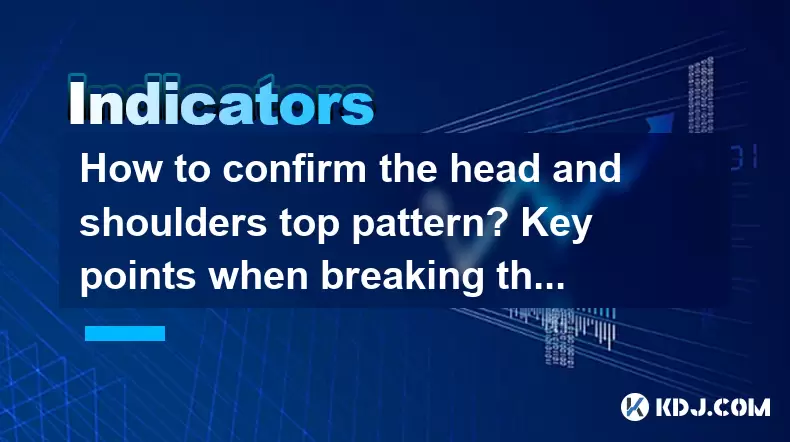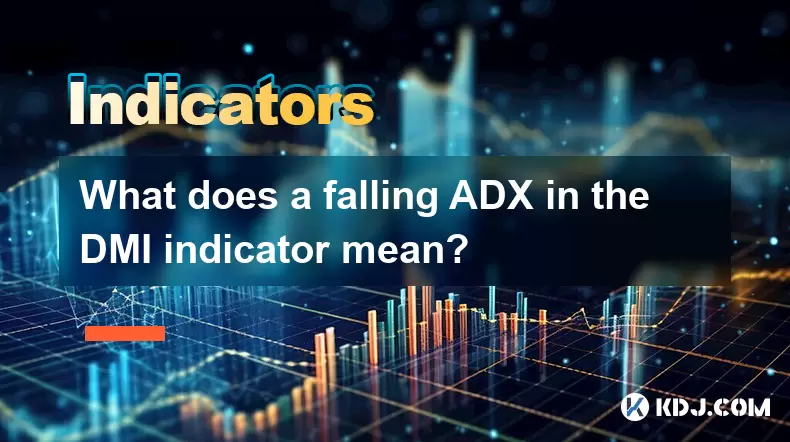-
 Bitcoin
Bitcoin $116700
0.24% -
 Ethereum
Ethereum $3973
4.34% -
 XRP
XRP $3.283
7.68% -
 Tether USDt
Tether USDt $1.000
0.01% -
 BNB
BNB $789.8
2.27% -
 Solana
Solana $176.2
3.31% -
 USDC
USDC $0.9999
0.00% -
 Dogecoin
Dogecoin $0.2238
5.14% -
 TRON
TRON $0.3389
-0.51% -
 Cardano
Cardano $0.7907
4.03% -
 Stellar
Stellar $0.4527
10.02% -
 Hyperliquid
Hyperliquid $41.07
4.27% -
 Sui
Sui $3.794
1.77% -
 Chainlink
Chainlink $19.49
10.40% -
 Bitcoin Cash
Bitcoin Cash $580.9
0.74% -
 Hedera
Hedera $0.2617
4.32% -
 Avalanche
Avalanche $23.41
3.67% -
 Ethena USDe
Ethena USDe $1.001
-0.03% -
 Litecoin
Litecoin $122.4
1.38% -
 Toncoin
Toncoin $3.364
1.49% -
 UNUS SED LEO
UNUS SED LEO $8.988
0.37% -
 Shiba Inu
Shiba Inu $0.00001295
2.82% -
 Uniswap
Uniswap $10.62
5.75% -
 Polkadot
Polkadot $3.922
4.46% -
 Dai
Dai $1.000
0.01% -
 Bitget Token
Bitget Token $4.494
2.15% -
 Monero
Monero $268.0
-1.30% -
 Cronos
Cronos $0.1523
3.68% -
 Pepe
Pepe $0.00001127
4.43% -
 Aave
Aave $285.4
4.85%
How to confirm the head and shoulders top pattern? Key points when breaking the neckline
The head and shoulders top pattern signals a bullish-to-bearish reversal in crypto markets, confirmed by a neckline break with increased volume.
Jun 01, 2025 at 03:42 am

The head and shoulders top pattern is one of the most reliable and widely recognized chart patterns in technical analysis within the cryptocurrency market. This pattern signals a potential reversal from a bullish trend to a bearish one. To confirm the head and shoulders top pattern and understand the key points when breaking the neckline, it is crucial to delve into the structure of the pattern and the specific conditions that validate its formation.
Understanding the Head and Shoulders Top Pattern
The head and shoulders top pattern consists of three peaks, with the middle peak (the head) being the highest and the two outside peaks (the shoulders) being lower and roughly equal in height. The pattern is completed when the price breaks below the neckline, which is a support level formed by connecting the lows of the two troughs between the peaks.
To confirm the head and shoulders top pattern, the following elements must be present:
- Left Shoulder: This is the first peak in the pattern, formed after an uptrend.
- Head: The second and highest peak, formed after a temporary decline from the left shoulder.
- Right Shoulder: The third peak, which is lower than the head but roughly equal in height to the left shoulder.
- Neckline: A line drawn connecting the lows of the troughs between the left shoulder and the head, and the head and the right shoulder.
Identifying the Left Shoulder
The left shoulder is formed when the price reaches a new high after an uptrend, followed by a decline to a support level. This support level becomes the first point of the neckline. Traders should look for a clear peak and subsequent pullback to confirm the left shoulder. Volume typically decreases as the left shoulder forms, indicating waning bullish momentum.
Formation of the Head
After the left shoulder, the price rallies again to form the head, which is the highest point in the pattern. The peak of the head should be significantly higher than the left shoulder. Following the peak, the price declines once more, often to the same support level as the left shoulder, reinforcing the neckline. Volume may increase during the formation of the head, reflecting strong buying interest, but it should decrease during the subsequent decline.
Creating the Right Shoulder
The right shoulder forms when the price rises again but fails to reach the height of the head. It should be roughly equal in height to the left shoulder. The price then declines to the neckline, completing the pattern's formation. Volume is typically lower during the formation of the right shoulder compared to the head, signaling reduced buying pressure.
Confirming the Neckline Break
The most critical aspect of the head and shoulders top pattern is the break of the neckline. The neckline break is confirmed when the price closes below the neckline. This break should be accompanied by increased volume, indicating strong bearish momentum. Traders should wait for this confirmation before considering bearish positions.
Key points to consider when the neckline is broken:
- Volume: A significant increase in volume during the neckline break is a strong confirmation of the pattern's validity.
- Price Action: The price should close below the neckline, not just touch it. A clear and decisive break is essential.
- Retest: Often, the price will retest the neckline from below, providing a second chance to confirm the break. If the price fails to break back above the neckline, it reinforces the bearish signal.
Measuring the Price Target
Once the neckline break is confirmed, traders can estimate the potential price target by measuring the distance from the head to the neckline and projecting it downward from the point of the neckline break. This measurement provides a rough estimate of the potential decline.
Practical Steps for Confirming the Head and Shoulders Top Pattern
To practically confirm the head and shoulders top pattern and understand the key points when breaking the neckline, follow these steps:
- Identify the Left Shoulder: Look for a peak after an uptrend, followed by a decline to a support level. Draw a line at this support level to begin forming the neckline.
- Confirm the Head: Watch for a new high that exceeds the left shoulder, followed by another decline to the same support level. Extend the neckline to connect this second trough.
- Observe the Right Shoulder: Monitor the price for a rise that fails to reach the height of the head but is roughly equal to the left shoulder. The subsequent decline should approach the neckline.
- Wait for the Neckline Break: Confirm the pattern when the price closes below the neckline with increased volume. Be patient and wait for a clear break.
- Watch for a Retest: If the price retests the neckline from below and fails to break back above it, this reinforces the bearish signal.
- Calculate the Price Target: Measure the distance from the head to the neckline and project it downward from the point of the neckline break to estimate the potential decline.
Frequently Asked Questions
Q: Can the head and shoulders top pattern occur in any timeframe?
A: Yes, the head and shoulders top pattern can be observed in any timeframe, from minute charts to monthly charts. The validity of the pattern remains the same across different timeframes, but traders should consider the timeframe they are trading in and adjust their strategies accordingly.
Q: What if the right shoulder is significantly lower than the left shoulder?
A: If the right shoulder is significantly lower than the left shoulder, it may indicate a more pronounced bearish sentiment. However, the pattern is still valid as long as the right shoulder is lower than the head and the neckline break occurs with increased volume. The key is to ensure the pattern's overall structure remains intact.
Q: How reliable is the head and shoulders top pattern in predicting price reversals?
A: The head and shoulders top pattern is considered one of the most reliable reversal patterns in technical analysis. Its reliability increases when combined with other technical indicators and when the neckline break is accompanied by high volume. However, no pattern is foolproof, and traders should always use risk management techniques.
Q: Is it necessary to wait for a retest of the neckline after the break?
A: While a retest of the neckline is not strictly necessary for confirming the head and shoulders top pattern, it can provide additional confirmation of the bearish trend. Traders often look for a retest as it can offer a second entry point for bearish positions, but the initial break of the neckline is the primary confirmation signal.
Disclaimer:info@kdj.com
The information provided is not trading advice. kdj.com does not assume any responsibility for any investments made based on the information provided in this article. Cryptocurrencies are highly volatile and it is highly recommended that you invest with caution after thorough research!
If you believe that the content used on this website infringes your copyright, please contact us immediately (info@kdj.com) and we will delete it promptly.
- Roman Storm, Funding Effort, and the Looming Defense Retrial: A New York Minute on the Tornado Cash Case
- 2025-08-09 02:50:14
- Crypto's Wild Ride: XRP, Dogecoin, and the Altcoin Surge You Can't Ignore
- 2025-08-09 02:50:14
- Elon Musk, Bitcoin, and the Enduring Power of Approval: A Crypto Love Story?
- 2025-08-09 03:50:15
- Ruvi AI: The Next Big Thing After Ripple on CoinMarketCap?
- 2025-08-09 03:50:15
- Floki Price Surges: Elliott Wave and Fibonacci Setups Point to Potential Gains!
- 2025-08-09 02:30:16
- Pepe Price, RTX (Remittix?) & the $10K ETH Dream: NYC Crypto Chatter
- 2025-08-09 02:30:16
Related knowledge

What does it mean when the TRIX indicator suddenly diverges downward after a long period of convergence?
Aug 09,2025 at 12:56am
Understanding the TRIX Indicator in Cryptocurrency TradingThe TRIX indicator, or Triple Exponential Average, is a momentum oscillator used in technica...

Why is the rise limited after a MACD bottoming divergence?
Aug 09,2025 at 12:07am
Understanding MACD Bottoming Divergence in Cryptocurrency TradingThe MACD (Moving Average Convergence Divergence) is a widely used technical indicator...

What does it mean when the OBV continues to rise but the price is trading sideways?
Aug 08,2025 at 10:35pm
Understanding On-Balance Volume (OBV)On-Balance Volume (OBV) is a technical indicator that uses volume flow to predict changes in stock or cryptocurre...

What does a falling ADX in the DMI indicator mean?
Aug 09,2025 at 03:16am
Understanding the ADX and DMI Indicator FrameworkThe DMI (Directional Movement Index) is a technical analysis tool developed by J. Welles Wilder to id...

What does a double top pattern on the Williams oscillator mean?
Aug 09,2025 at 02:36am
Understanding the Williams %R OscillatorThe Williams %R oscillator is a momentum indicator developed by Larry Williams to identify overbought and over...

What is a nonce and how is it used in Proof of Work?
Aug 04,2025 at 11:50pm
Understanding the Concept of a Nonce in CryptographyA nonce is a number used only once in cryptographic communication. The term 'nonce' is derived fro...

What does it mean when the TRIX indicator suddenly diverges downward after a long period of convergence?
Aug 09,2025 at 12:56am
Understanding the TRIX Indicator in Cryptocurrency TradingThe TRIX indicator, or Triple Exponential Average, is a momentum oscillator used in technica...

Why is the rise limited after a MACD bottoming divergence?
Aug 09,2025 at 12:07am
Understanding MACD Bottoming Divergence in Cryptocurrency TradingThe MACD (Moving Average Convergence Divergence) is a widely used technical indicator...

What does it mean when the OBV continues to rise but the price is trading sideways?
Aug 08,2025 at 10:35pm
Understanding On-Balance Volume (OBV)On-Balance Volume (OBV) is a technical indicator that uses volume flow to predict changes in stock or cryptocurre...

What does a falling ADX in the DMI indicator mean?
Aug 09,2025 at 03:16am
Understanding the ADX and DMI Indicator FrameworkThe DMI (Directional Movement Index) is a technical analysis tool developed by J. Welles Wilder to id...

What does a double top pattern on the Williams oscillator mean?
Aug 09,2025 at 02:36am
Understanding the Williams %R OscillatorThe Williams %R oscillator is a momentum indicator developed by Larry Williams to identify overbought and over...

What is a nonce and how is it used in Proof of Work?
Aug 04,2025 at 11:50pm
Understanding the Concept of a Nonce in CryptographyA nonce is a number used only once in cryptographic communication. The term 'nonce' is derived fro...
See all articles

























































































